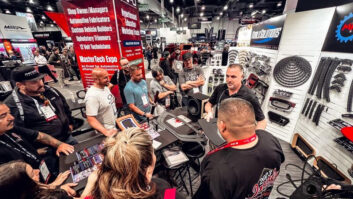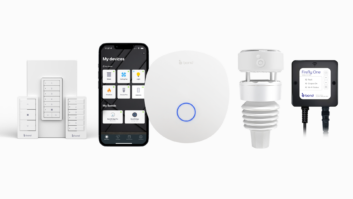NEW YORK – A growing trend among camera manufacturers prior to the recent Photokina show in Cologne, Germany, was the introduction of advanced point-andshoots with manual control overrides and large-format image sensors.
The target audience appears to be professional photographers looking for lighter gear to carry around on personal outings or in rugged terrain, and for advanced amateurs and semi-pros looking for a quickand- dirty backup to their DSLRs.
The year’s target was Sony’s popular RX100 Mark III, which drew competitive challenges from Fujifilm, Canon and Panasonic to name three.
Fujifilm’s X30 premium compact fixed-lens camera ($599) brings a range of features including a new realtime viewfinder and dual manual control rings to the market segment.
The viewfinder is said to be bright, fast and high resolving for the class with magnification of 0.65x while the display lag time is just 0.005 seconds.
Other features include a 12-megapixel 2/3-inch XTrans CMOS II sensor, EXR Processor II and a new Classic Chrome film simulation mode that is said to produce muted tones and deep color reproduction.
The new sensor is further enhanced with a new phase-detection AF system and EXR Processor II for high-speed and low noise images. The phase-detection AF system focuses in 0.06 seconds, has a startup time of 0.5 seconds, shutter-lag time of 0.015 seconds and shooting interval of 0.5 seconds.
The built-in 4x manual zoom lens has a F2.0-2.8 brightness capability.
The camera also includes a large tilting 3-inch 920K-dot premium clear LCD monitor, increased battery performance, and a strong, lightweight, die-cast magnesium-alloy body with retro styling accents.
Video is captured at up to FullHD 1080/60p and a bit rate of up to 36Mbps.
Canon, meanwhile, entered the contest with the PowerShot G7 X, which brings a longer lens and flipup touchscreen LCD to the game.
The G7 X (shipping in October at $700) packs a new 20-megapixel 1-inch CMOS format sensor, 24- 100mm equivalent f/1.8-2.8 lens, optical image stabilization, five-axis shake reduction for video capture, DIGIC 6 image processor, 31-point AF, 1.04-milliondot touchscreen tilting LCD, pop-up flash, exposure compensation dial, control ring for shooting mode, built-in ND filter, 1080/60p video capture with manual video controls, stereo audio recording, built-in Wi-Fi with NFC, and a smartphone remote control app.
The dedicated exposure compensation dial and control dial around the lens offer pros greater direct creative control and the familiar placement of many SLR cameras.
Meanwhile, the flip-up articulating LCD screen also makes it easy to take high-quality selfies — an important attribute in this age of social-media sharing.
Panasonic killed two birds with one stone by both expanding its offerings of cameras with Ultra HD recording characteristics while going after the RX100 Mark III at the same time.
The answer was the Lumix LX100 LX-series pointand- shoot with a Micro Four Thirds sensor.
The high-performance LX100 is priced by retailers including B&H Photo at an $899 suggested retail, with an expected November ETA.
The Micro Four Thirds MOS image sensor offers 16.8-megapixel resolution, and is equivalent in size to the sensors used in the company’s compact system cameras. That means it’s significantly larger than the 1/1.7-inch variety typically used in other LX models, which results in better low-light resolution and significantly cleaner enlargements and crops.
The Panasonic model is also larger than the 1-inch sensor found in Sony’s RX100 and some other recent competitive challengers to the camera class.
Like some other recent higher-end offerings in the Lumix line, the LX100 will shoot 4K Ultra HD video, playable on the new class of Ultra HD TVs hitting the market, including a few from Panasonic.
Other features in the camera include a built-in 2.76-million-dot electronic viewfinder; Leica DC Vario- Summilux f/1.7-2.8 (24-75mm equivalent) zoom and manual controls including an aperture ring, a shutter speed dial, and an exposure compensation dial.
It has a 2,764,000-dot live viewfinder, 3-inch 921,000-dot rear LCD, the same AF system found in the high-end Lumix GH4, Wi-Fi with NFC capability, in-camera RAWto- JPEG conversion and an included external flash.
In addition, the new 4K video mode will capture MP4 format movies at 30/24fps or FullHD video at 60 fps in MP4 or AVCHD. The 4K video system is said to be able to capture 8-megapixel stills at up to 30 fps.
The larger sensor and relatively low 16.8-megapixel number gives the camera the benefit of better depth of field, and enhanced low-light shooting capability. In addition, the camera has boosted the maximum ISO capability to 25,600.













